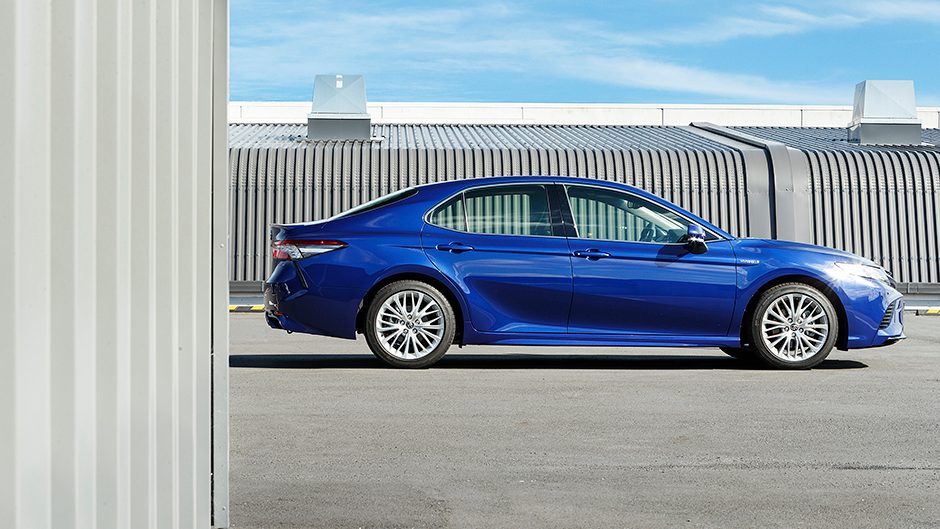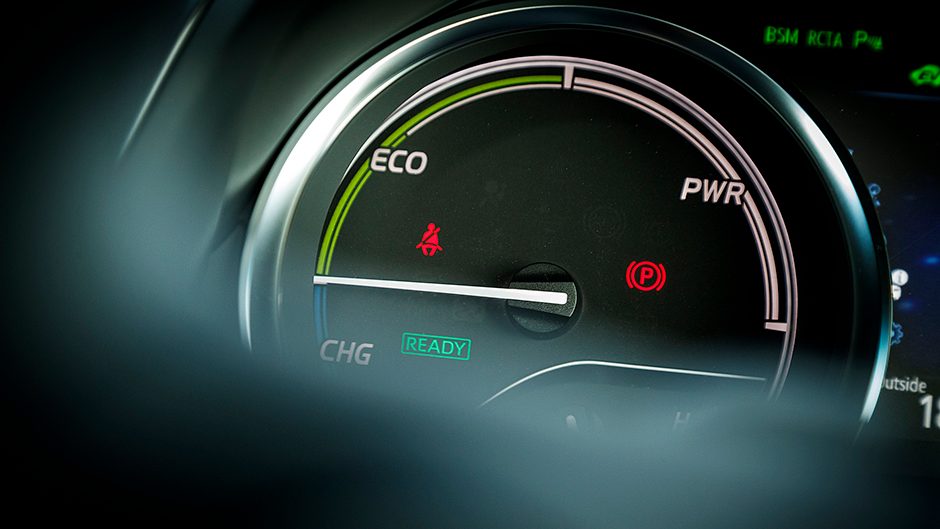2018 Toyota Camry ZR review
Words Kyle Cassidy | Photos Tom Gasnier
Camry keeps on ticking, now in its eighth generation, one where the hybrid driveline takes centre stage. We drive the top ZR model.
Mainstream sedans have been placed on the endangered list as these old stalwarts disappear or emerge renewed as sleek five-door hatches. But not the Camry; it’s soldiering on as a good old four-door, but one that’s technologically up to date. The new Camry line-up signals a change from Toyota in that most offerings utilise hybrid power, available in GX, SX and ZR trims.
There’s also a conventional 2.5 GL aimed at fleets, and the V6 returns with 224kW and 362Nm, an eight-speed auto and sports-tuned suspenders. But it’s the most expensive Camry we investigate here, the $49,490 ZR, that price being Toyota’s all-in, no-haggle figure.

For the first time in aeons, the Camry presents as an all-new model; new bones, powertrain and styling. This, the eighth-generation model, is made in Japan, if that matters. Possibly the most important aspect for the hybrid is its improved economy, with the quoted consumption down from 5.2 to 4.2L/100km for the GX and SX, the ZX rated at 4.5. Still it’s a handy improvement, and half of what the V6 is said to chew through.
We saw the consumption figure peak to a high of 8.5L/100km after the more demanding period of our time with the ZX, but after a reset and more of your usual Camry-type rambling, the numbers never nudged past the low 5s, and all without the need to skimp on the throttle.
The 2.5-litre four cylinder is an all-new design and with the Toyota engineers fussing over the pursuit of rapid and efficient combustion, it’s claimed to have a thermal efficiency of 41 per cent. It does require 95 octane fuel for those crunching the operating numbers down to the last decimal place. Your servicing costs are now a known quanitity under Toyota’s new retail paradigm, the four-cylinder hybrid costing $195 a pop for the first four years/60,000km, with the usual 15,000km/12 month intervals.

The hybrid drive has been overhauled too, with new motors, controllers and battery, which Toyota says has reduced energy losses by 20 per cent. Has it improved the EV operation of these self charging hybrids? No, not really. The motor can get things underway but the engine is then quickly in to help out.
The system will alternate between power sources, the motor maintaining a cruise on the flat and there is an EV mode but it’s good only for low speed traffic and it’s not long before the battery range is juiced. But the powertrain is super smooth, the initial take-up polished, and general progress is creamy while ICE interventions are quiet and refined. Only when pressed does the four start to sound off.
The total system output is now up to 160kW, though Toyota doesn’t quote a combined torque figure due to the complexities of the hybrid drive but the electric motor is good for 202Nm from the moment it starts spinning while the 2.5 delivers a maximum of 221Nm between 3600 and 5200rpm. While not a torque monster, there’s decent urge delivered in urban-type running and without the need to constantly mash the go pedal.

The hybrid battery is still old-tech nickel metal hydride but the new platform allows it to be sited under the rear seat so it no longer robs Camry of boot space. And this sees the hybrid with a more suitcase-friendly 524L capacity, which all the cabbies on the airport run will appreciate. The boot lid pops open on command to reveal a wide and flat load space. There is split folding too, though the load-through hole is fairly tight for height.
Camry is lower by 25mm overall and the wheelbase extends by 50mm to 2825mm meaning plentiful rear leg room. Despite a roof chop, there’s enough headroom for most, and entry is okay too. The back seat itself is generously padded with some form to the bench for added comfort and there’s a couple of USB charge points back there.
Camry is spun off Toyota’s new modular platform and is said to be 30 per cent stiffer while the tracks are wider via redesigned Mac struts up front and new compact wishbones with separate dampers and springs in the rear.

Toyota wants its products to be more ‘fun to drive’ and so is this the case for the new Camry? Our initial impressions from the launch last month were based largely on the V6 version, only having the briefest of squirts in the hybrid. The V6 gets a sports set-up with revised bars, springs and dampers, and it goes a whole heap better than the ZR. While there is some life in this hybrid’s steering, and the weighting and assistance are sound, the damper and spring rates need a rethink.
It is set more toward cosseting than cornering, and so the wheels need better control. Bumps send a force up through the suspension towers, the bump stops getting the odd tickle up, and the front wheels can tramp over the lumps when accelerating. While the Camry didn’t call for mercy on our regular drive loop of pain, this ZR hybrid wasn’t particularly happy about it either. The V6 we drove felt more composed, the sports-tuned suspension delivering better wheel control, and smoother overall progress as a result.
Aside from the ill-mannered damping, the Camry has a solid base with a reasonable balance, ability to turn and poise in the curves. We guess hybrid drivers take the highway route and it’s fine on smoother stretches of tarmac, but the big alloys can crash over sharp edges. The response from the powertrain is improved however, especially in the Sport mode, as they’ve removed the delayed, rubbery reaction to the gas pedal. The brakes operate a little better at slower speeds but they still tend to be too grabby and the pedal is hard to modulate.

Camry’s styling is now racier than it has been in a while and there are distinct looks for the base model GL and GX while the SX, ZR and V6 get a sportier persona. There are LED headlamps and DRLs across the range while the ZR gets a body kit and a front end with more intent.
The character of the cabin improves, the quality hard to fault with classy trim lining most surfaces, save for the hard plastic edge of the centre console. The dash and console merge nicely via a curving design flourish and the media screen melts into the mix well too.
This relays a clear image and there are a few physical menu buttons to help with operation. It’s lacking CarPlay or Android Auto and Toyota Link is not yet available in NZ. Fancier bits include the powered steering column, sunroof, wireless charger and a head-up display, which we found a little dim even on its brightest setting. While there’s seat ventilation, more New Zealanders would benefit from warmers.

Toyota hasn’t skimped on the active safety and it’s encouraging to see it offer AEB, active lane keeping, and all-speed active cruise as standard fit items across the range. While the cruise is easily set, it leaves a big gap to the car in front which invites impatient types to squeeze in on the motorway.
Camry has proved hardy in crash testing, achieving a five-star ANCAP rating, scoring 36.16 out of a possible 37 points. The ZR also gains blind spot and rear cross traffic alert as it is fitted with front and rear parking sensors.
The design aspect of this big sedan makes for a more interesting Camry, and the hybrid powertrain impresses with its economy and smoothness. Toyota has improved much of the dynamic package but that undercooked suspension fails to deliver the fun-to-drive promise for the ZR. Still if it’s a big, easy-going sedan with low fuel bills you need, this will do nicely.










